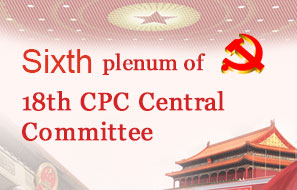Software holds key to language preservation
New technologies and software could help preserve Tibetan language and culture, while also promoting communication between different ethnic groups, a news conference in Lhasa heard on Thursday.
All three of the world's main mobile phone operating systems — Apple iOS, Google Android and Microsoft Windows — now come with Tibetan typefaces and keyboards, the conference in the Tibet autonomous region's capital heard.
Software offering handwriting or voice recognition and synthesis is also available in the language, and China's first Tibetan language search engine, yongzin.com, launched this year, aiming to serve as a unified portal for all major Tibetan language websites.
Tibet University's Tibetan Information Technology Research Center and iFlytek Co Ltd, a national enterprise dedicated to researching intelligent speech and language technologies, have been instrumental in developing Tibetan language software and applications over the past five years.
"The launching of relevant voice products and applications reveal China's international leading position in the field of intelligence speech technology," said Hu Yu, rotating president of iFlytek Co Ltd.
Hu said the official launch of Tibetan intelligent voice applications had far-reaching significance for promoting communication between ethnic groups, and boosting the protection and inheritance of Tibetan language and culture.
Li Junjie, vice-president of Tibet University, said its research center had made "great contributions" to "interdisciplinary Tibetan information technology research, Tibetan software development, and training Tibetan intellectuals in information technology".
The center was further lauded by Ngodrup, vice-president of Tibet Minzu University, who said standardization was crucial for a language's healthy development.
"The Tibetan Information Technology Research Center plays a core role in processing Tibetan pictographs, ideographs and phonology," said Ngodurup, who also plays as a leading role in the Tibetan information technology joint laboratory.
Lhakpa Dondrup, 27, a postgraduate student of the research center, said the latest raft of Tibetan language applications had been useful for his studies.
"One of my favorite parts is the machine translation tool, it is so convenient, and it also supports voice recognition," said Lhakpa.
"My major is to computers, and I really like the newly developed Tibetan keyboard, it has greatly accelerated typing speed, and is really convenient."
- Is it a thing? 10 odd jobs where you can make good money
- Message on a bottle: Mineral water company launches drive to find missing children
- Sun Yat-sen champion of national integrity, unity: Xi
- Four killed, two injured after house collapses in C China
- Cross-Straits forum held to commemorate Sun Yat-sen

















